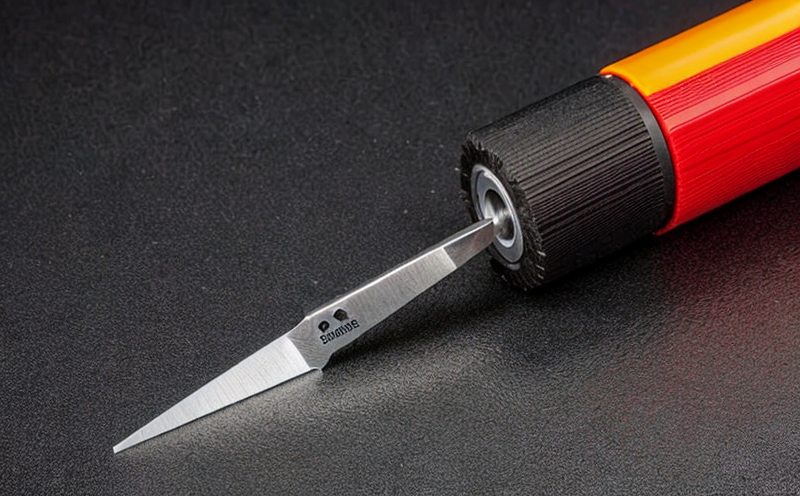Ensuring that products with potential sharp edges have clear warnings or safety instructions
The Crucial Importance of Clear Warnings Safeguarding Consumers with Potential Sharp Edges
As a responsible business owner, you understand the significance of ensuring that your products are safe for consumers to use. One critical aspect of product safety is warning customers about potential sharp edges on your products. This may seem like a minor consideration, but it can have a substantial impact on your brands reputation and customer trust.
At Eurolab, we specialize in laboratory services that help businesses like yours identify potential hazards and provide essential safety information to consumers. In this article, well delve into the importance of clear warnings for products with potential sharp edges, exploring the benefits, advantages, and best practices for implementing these measures.
What are Potential Sharp Edges?
Potential sharp edges refer to any product or component that could cause cuts, lacerations, or other injuries due to its design, material, or construction. These hazards can be found in a wide range of products, including
Kitchen utensils and appliances
Hand tools and machinery
Furniture and decor items
Electronics and gadgets
Why is it Essential to Warn Consumers about Potential Sharp Edges?
Warning consumers about potential sharp edges is crucial for several reasons
Liability Protection By providing clear warnings, you can minimize the risk of lawsuits and financial losses resulting from product-related injuries.
Reputation Management Demonstrating a commitment to consumer safety enhances your brands reputation and fosters trust among customers.
Compliance with Regulations Many jurisdictions have laws requiring businesses to label or warn consumers about potential hazards, including sharp edges.
Advantages of Using Clear Warnings for Products with Potential Sharp Edges
Implementing clear warnings for products with potential sharp edges offers numerous benefits
Reduced Risk of Accidents and Injuries
Enhanced Brand Reputation and Customer Trust
Compliance with Regulatory Requirements
Improved Product Safety and Reliability
Cost Savings through Reduced Liability Claims
Best Practices for Implementing Clear Warnings
To ensure that your products meet safety standards, follow these best practices
Conduct Thorough Risk Assessments Identify potential hazards and assess their likelihood and severity.
Develop Effective Warning Labels and Instructions Clearly communicate the risks associated with sharp edges using easy-to-understand language and eye-catching visuals.
Provide Adequate Safety Information Include detailed instructions on how to use products safely, as well as any necessary precautions or warnings.
Regularly Review and Update Safety Information Ensure that your safety information remains accurate and up-to-date by regularly reviewing and revising it.
Frequently Asked Questions
What are the consequences of not warning consumers about potential sharp edges?
Failure to warn consumers can result in financial losses, damage to your brand reputation, and even lawsuits.
How do I determine if my product has potential sharp edges?
Conduct a thorough risk assessment to identify any potential hazards, including sharp edges.
What type of warning labels or instructions should I use?
Use clear, concise language and eye-catching visuals to effectively communicate the risks associated with sharp edges.
Conclusion
Ensuring that products with potential sharp edges have clear warnings or safety instructions is an essential aspect of product safety. By following best practices and implementing effective warning measures, you can reduce the risk of accidents and injuries, enhance your brand reputation, and comply with regulatory requirements. At Eurolab, were committed to helping businesses like yours navigate the complexities of product safety and ensure that their consumers are protected.
-
Testing consumer products to ensure they do not have sharp edges that could pose injury risks
-
Evaluating the safety of products by assessing potential hazards from sharp points or protrusions
-
Testing the edges of materials, such as metal, glass, and plastic, for smoothness and safety
-
Simulating real-world interactions with products to determine if sharp edges could cause cuts or punctures
-
Assessing the impact of sharp edges on children's toys, tools, or household items
-
Testing the effectiveness of protective covers or shields in preventing sharp edge injuries
-
Verifying the compliance of products with safety regulations related to sharp edge risks
-
Assessing the potential for scratches, punctures, or injury from edges in electronic devices or appliances
-
Testing for sharp edges on packaging materials and their potential impact during shipping or handling
-
Evaluating the design of consumer products to eliminate unnecessary sharp points in critical areas
-
Testing items like kitchenware, furniture, and automotive components for edge safety
-
Assessing the durability of edge protection features that prevent sharp edges from emerging over time
-
Simulating everyday use to assess whether sharp edges become exposed during product wear
-
Evaluating materials used in product construction to ensure they can be safely handled without sharp edges
-
Testing for possible cuts or abrasions caused by sharp edges on clothing, textiles, or accessories
-
Verifying that products meet safety standards for edge smoothness and protection in consumer goods
-
Testing for sharp edges in products exposed to environmental wear, such as outdoor gear or tools
-
Assessing the impact of sharp edges in children's products or products intended for vulnerable populations
-
Testing for the formation of sharp edges during manufacturing or due to material degradation over time
-
Verifying the effectiveness of safety measures such as rounded corners or edge buffers




